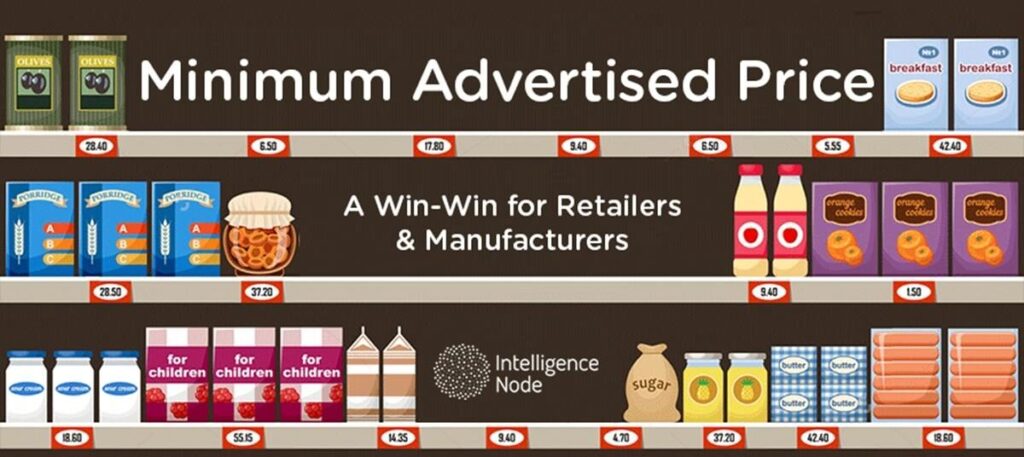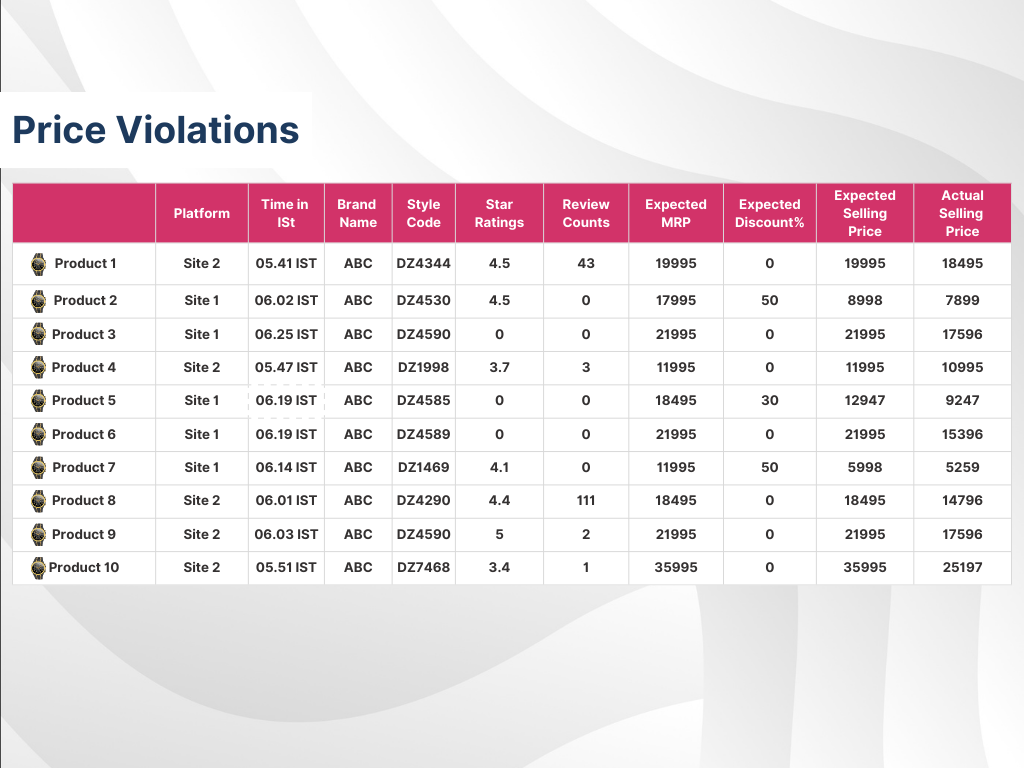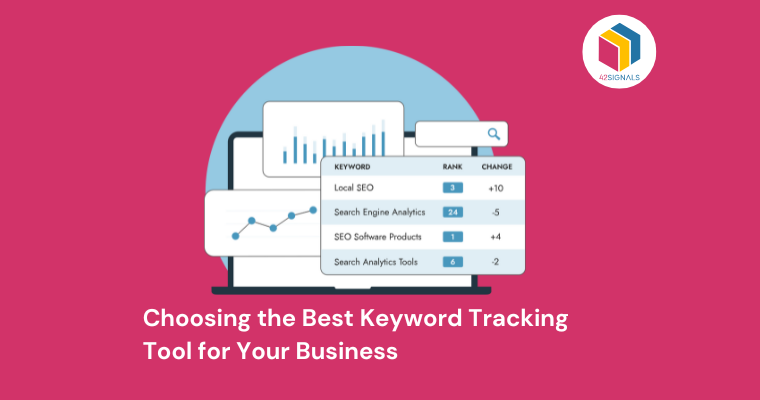With the rapidly fluctuating prices, how do you ensure your products hold their value in a market? Well, this question isn’t just theoretical – it’s a daily challenge for brands and retailers.
Navigating through this ever-changing environment requires not just agility and innovation, but also a strategic approach to pricing. This is where the concept of Minimum Advertised Price enforcement comes into play, serving as a critical tool for protecting your brand’s value and market position.

Source: https://avada.io/resources/map-pricing.html
MAP Pricing in Retail
MAP is essentially a self-imposed rule set by manufacturers or brands, dictating the lowest price at which a product can be advertised. This policy doesn’t limit the actual selling price but controls how the product is marketed price-wise.
Imagine walking into a high-end boutique or browsing an online luxury store. You come across the latest Michael Kors handbag, a symbol of style and luxury. The price tag, consistent across various retailers, reflects not just the monetary value but also the prominence associated with the brand. This consistency is the result of carefully implemented Minimum Advertised Price enforcement.
Michael Kors sets a MAP to ensure that no retailer advertises their handbags below a certain price point. This strategy is essential for several reasons. Firstly, it maintains the brand’s upscale image, vital in the luxury market where price often correlates with quality and prestige. A handbag priced too low could be perceived as less desirable or inferior, which could diminish the brand’s allure.
Establishing and enforcing a Minimum Advertised Price (MAP) policy is akin to setting the rules of a complex game where every player — manufacturers, retailers, and consumers have a stake. It’s a strategic move, critical in today’s eCommerce era, where price perception can make or break a brand’s reputation.
Establishing and Enforcing MAP
Establishing MAP Policies
Imagine a manufacturer, let’s call them Luxe Electronics, launching a new line of high-end headphones. Luxe Electronics sets a MAP to ensure these headphones are not advertised below a certain price point, say $300. This move isn’t just about numbers; it’s about sending a message — these headphones are premium, and their price reflects their quality.
To communicate this effectively, Luxe Electronics disseminates its MAP policy across its distribution network, ensuring all retailers understand the game’s rules. The policy outlines not just the price but also the consequences of breaching this agreement, creating a transparent and fair playing field for all retailers.

Monitoring Advertised Prices
Now, Luxe Electronics has stepped into the role of a vigilant overseer. With their products in the market, monitoring becomes key. This isn’t a one-time affair but a continuous process.
Today, technology simplifies this task with automated software that tracks advertised prices across various platforms, flagging any discrepancies. This digital vigilance is crucial; it ensures that all retailers adhere to the agreed-upon MAP, maintaining the product’s perceived value and market positioning.

Minimum Advertised Price Enforcement with Tact and Consistency
But what happens when a retailer steps out of line, advertising the headphones at $250? This is where enforcement comes into play. Luxe Electronics must act — not rashly, but with a calculated approach. Enforcement might start with a simple reminder to the retailer, realigning them with the MAP policy. However, repeated violations could lead to sterner measures, such as terminating partnerships. This step is critical; it sends a clear signal to all retailers about the seriousness of the MAP policy, reinforcing its importance.
Establishing and enforcing a MAP policy becomes an intricate yet manageable task. It’s about setting expectations, monitoring adherence, enforcing rules, and staying within legal bounds. It also helps streamline and strengthen partner relationships by adopting a friction-free collaboration.
Role of 42Signals in MAP Enforcement
42Signals emerges as a pivotal player, offering an innovative solution to Minimum Advertised Price enforcement challenges. Picture a world where tracking countless products across a multitude of platforms is simplified into a streamlined, efficient process. This is the realm 42Signals operates in, providing businesses with a robust, automated tool that revolutionizes how MAP policies are monitored and enforced.
42Signals empowers businesses with proactive insights. Through its detailed reporting capabilities, companies can spot pricing trends, anticipate market shifts, and make informed decisions to stay ahead of the competition. For MAP solutions, get in touch with us at sales@42signals.com
FAQs
What is the minimum advertised price policy enforcement?
MAP policy enforcement is the active implementation of rules set forth by manufacturers or suppliers concerning the lowest acceptable price at which their products can be advertised. Its purpose is threefold: first, it maintains a uniform brand image; second, it promotes equitable competition among authorized retailers; and third, it discourages unauthorized sellers from undercutting market rates. Successful MAP enforcement entails regular auditing, clear communication, and ongoing education. It enables firms to defend their merchandise values and cultivate solid relationships with trusted distributors and vendors.
What is the minimum advertised price monitoring?
Monitoring MAP requires diligent observation and evaluation of reseller pricing patterns to spot possible deviations from agreed-upon pricing terms. Brands employ sophisticated software tools and meticulous manual checks as part of exhaustive Minimum Advertised Price enforcement tactics. Swift action against infringing parties – including recourse via legal avenues when warranted – ensures continued success and upholds fairness among all legitimate dealers and re-sellers.
What is the minimum advertised price agreement?
A MAP agreement constitutes a formal pact between producers or wholesalers and their downstream trading associates delineating the least tolerable publicized price points for commodities being sold. By defining parameters for cost display, these accords seek to create parity in product promotion methods and sustain corporate identity. Well-constructed MAP agreements outline lawful selling procedures, describe ramifications for disobedience, propose conflict resolution pathways, and carve out exemptions for special situations. They permit enterprises to exert some influence over commercial messaging without compromising collaborative ties with crucial supply chain participants.
What is the minimum advertised price antitrust?
MAP policies raise certain antitrust issues since they involve horizontal price restrictions, making it critical for companies to observe pertinent competition legislation. Engaging in prohibited anti-competitive conduct, such as hindering free trade, stifling entrepreneurship, or creating monopolies, carries significant financial penalties and reputational damage risk. Therefore, consulting competent attorneys proficient in regional antitrust statutes and constructing carefully worded MAP agreements focused on suggested pricing ranges instead of mandated figures becomes imperative.
Additionally, structuring deals flexible enough to accommodate unique discount opportunities and omitting select categories of sellers from direct involvement further reduces potential regulatory complications. In conclusion, striking a careful equilibrium between managing commercial communications and respecting competitive dynamics remains vital for sustainable business growth.





